Choosing built-in faucets in the bathroom
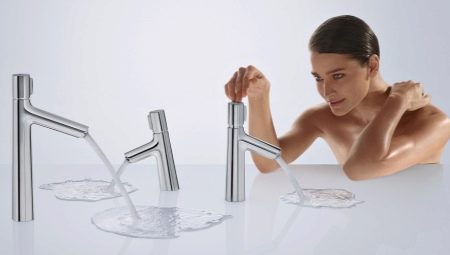
Before choosing a built-in faucet in the bathroom, you need to understand what it is and how it differs from a conventional faucet. That is, to imagine whether it makes sense to use such a device at all. And if it does, then what it should be.
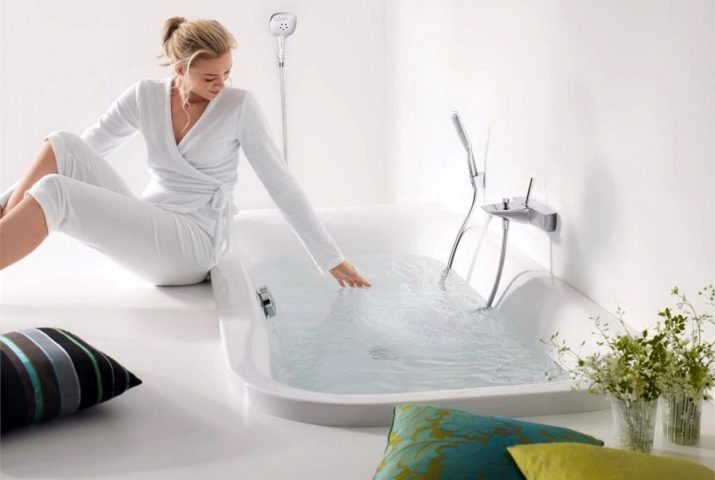
Advantages and disadvantages
The built-in bath mixer is extremely convenient. It differs from traditional models by the introduction of hidden communications and an internal block into the design. Since only the control levers, a spout and a shower head are located outside, the risk of injury from hitting something protruding is minimized. This property is especially valuable where there are children or very old people. For many consumers, however, another property of built-in mixers comes to the fore - their increased aesthetics.


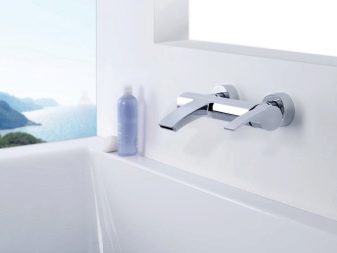
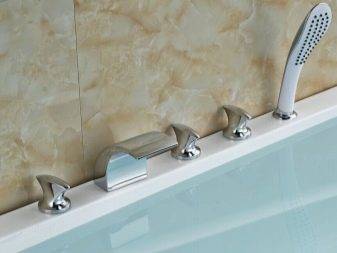
After all, any pipes and even the main details are hidden inside and will not spoil the interior. Masking decorative overlays are selected according to your taste. In addition, manufacturers are not too eager to pay for warranty costs. Therefore, they try to make solid structures that are as reliable as possible and rarely provoke leaks. It is not difficult to repair the built-in mixer, almost always the work is limited to replacing the seals.
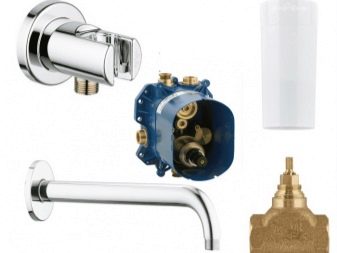
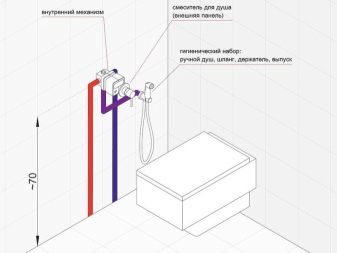
The spout and watering can not be located where it is technically justified, but where it is convenient. It is even possible to install them on different walls. In the small space of a typical bathroom, a built-in mixer is very valuable. Moreover, the room contains fewer all kinds of parts and structures. And it will be easier to restore elementary order.
All this does not mean, of course, that the built-in mixer is ideal. It also has relatively significant disadvantages. So, the product itself is more expensive. Installation is also expensive.
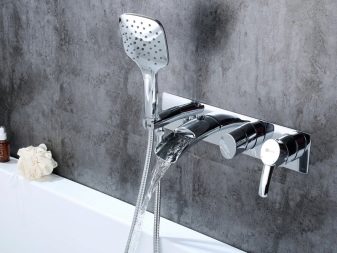
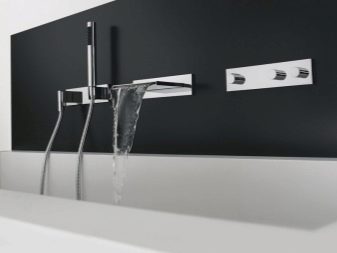
And in this case, only those who know how to properly groove and draw up professional plumbing wiring diagrams will be able to do without specialists.
Views
The built-in mixer for exposed installation is a monoblock. All main parts are assembled in one piece and attached to the side of the bath. But the mixing unit is placed under the side. The main components are:
- mixer;
- spout;
- valve elements;
- shower head and hose for it.
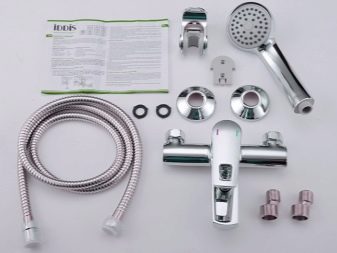
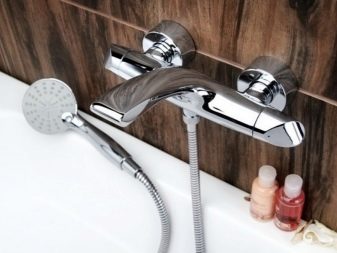
The flush mounting scheme has another name - flush mounting. It implies a refusal to connect parts. Instead, functional parts are used, each of which solves only one problem. Each part is attached to the body of the bathtub and can be supplied separately from other parts. Freestanding parts with wall mounting are also found, but it is much more practical to mount them all directly on the side of the bath.
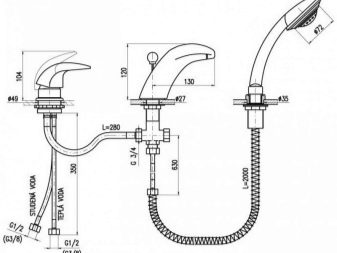
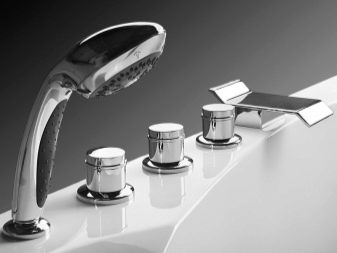
In the process, the font is cut through several times. You may need 1-5 holes, it depends on what accessories you plan to use. If only 2 holes are made, then a watering can, a spout and valves are attached to the board. Three-channel mounting means mounting a pair of control levers on board in combination with a spout or shower head. When using 4-5 holes per board, you can fix:
- shower head;
- spout;
- 3 control levers.
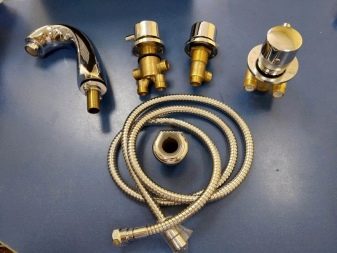

The watering can extends, and the hose is masked by the wall of the bath. As needed, it is pulled out by the watering can. If a flush-mounted installation is selected, the hose will extend 1.2 m.When installed outdoors, it can be pulled out by 1.6 m. The difference between the designs is also associated with the type of spout.
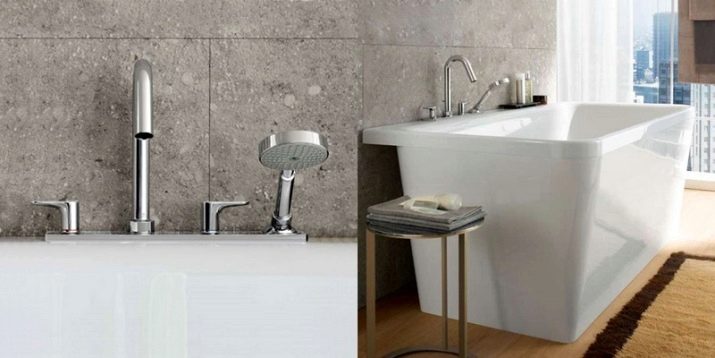
Economy class products use tubular spouts. Such mixers outwardly resemble a metal pipe. Savings are achieved by eliminating small parts and expensive materials.
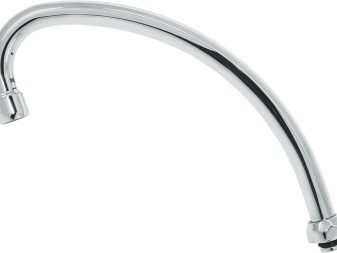
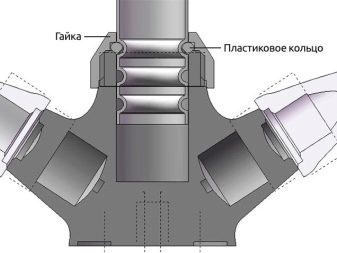
Important: in any case, 2 locking rings must be used. "Noses" have different lengths, and in shape they resemble a square, triangle or circle.
Soldered spouts are more expensive than tubular spouts. In many cases, they have a non-standard shape and stand out for their design. But the most expensive spouts are made by casting. But this technology only makes it possible to make heavy mixers. Instead of brass, they use stronger and "weighty" materials.
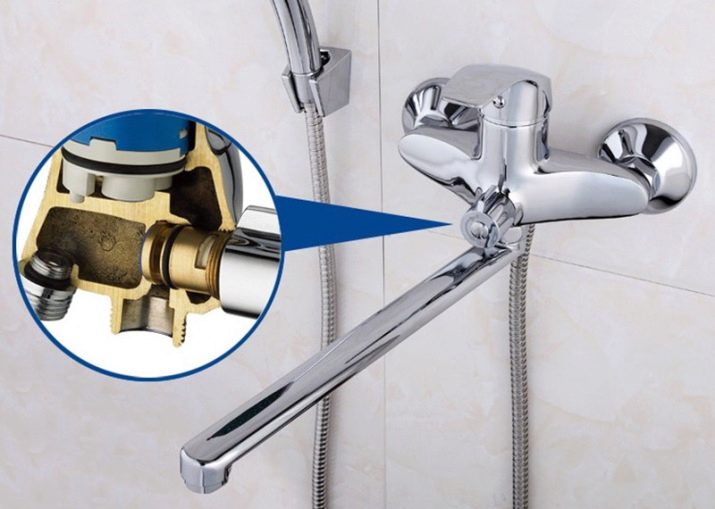
It is fundamentally important: it is impractical to use stainless steel structures. The key quality parameter of the spout is its throughput. Simply put, this is just a water flow passed per unit of time. This property is determined by the diameter of the hole and the length of the spout. Ultimately, however, the difference will still be small.
Single-lever
This type of mixer has become very popular in recent years and is considered a completely modern solution. Its important advantage is its visual appeal.... The lever performs the function that in a two-valve system is assigned to a pair of separate heads. Using a lever, both the temperature and the pressure force in the apartment (home) line are controlled. The body is made of a variety of materials.

In addition to spout, switch and cartridge, the gaskets and other auxiliary elements... Some units allow to increase the comfort of use. The ball lever valve perfectly resists even powerful water hammer. But there are also problems:
- quite high price;
- rapid accumulation of scale;
- rapid wear of rubber parts;
- high complexity of repair.
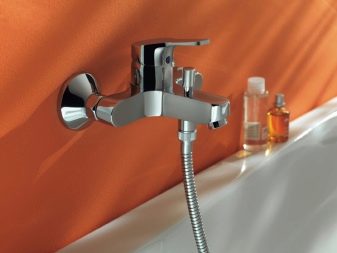
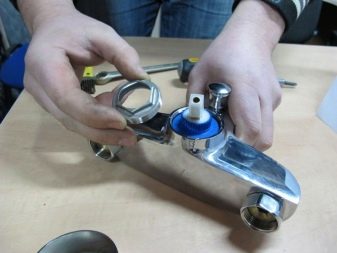
Cascading
The water cascade is like a small waterfall. Some models of such mixers are additionally illuminated. However, there are no special differences from the standard spouts inside. The geometry of the spout is a metal or plastic panel with a narrow slotted opening. A wide flat stream (the same waterfall) flows out from there.
The flow rate and throughput of the structure are quite high. You will be able to fill up a bath twice as fast as usual. At the same time, side splashing is reduced. The point is that the jet is oriented not to the bottom, but to the walls. The disadvantages of the product are the increased price and inconvenience of filling containers (for example, buckets or bottles).

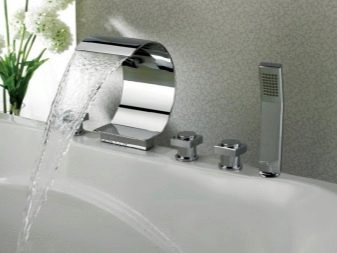
Two-valve
An alternative name is two-arm mixers. A similar solution is often found in retro-style rooms. One of the valves is responsible for cold water, and the other for hot water. The device operates simply and is highly reliable. There are two types of two-valve mixers.
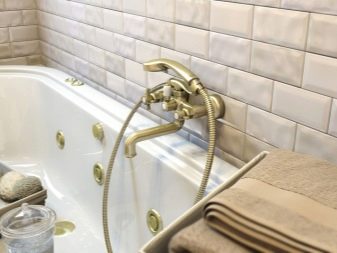
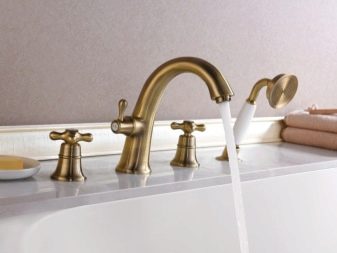
Sometimes used crane-axle box with a rubber seal. The problem is that due to exposure to water, especially hot water, the seal layer can become thinner over time. Therefore, the seal has to be replaced from time to time. In the semi-turn version, the water supply occurs when the holes in the ceramic plate are aligned.

Important: for long-term operation, you will need to use an additional filtration unit.
Thermostats
Thermostatic mixers can be programmed in a specific way. The required temperature is indicated once. In the future, before changing the settings, it will be maintained at the same level. There are also options for adjusting the water pressure... Thermostatic mixers can operate on an electronic or mechanical element base.
Electronic versions usually use an LCD screen. The necessary indicators are displayed on it. The devices are powered by batteries or by connecting to the mains. For control in different versions, both buttons and touch panels are used. Certain types of mixers react to the approach of a hand, which is detected by thermal sensors.
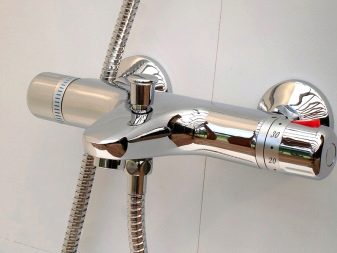
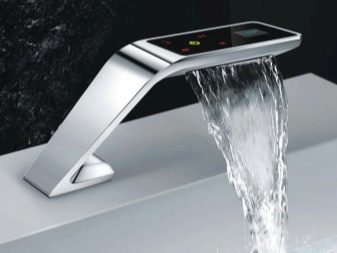
Mechanical thermostats are designed differently. In them, the water temperature is adjusted using levers or valves. In any case, the risk of scalding due to gushing hot water is excluded. The absence of the need to adjust the flow temperature helps to save both water itself and time.
But you will have to pay more for a thermostat than for a simpler mixer with other similar characteristics.
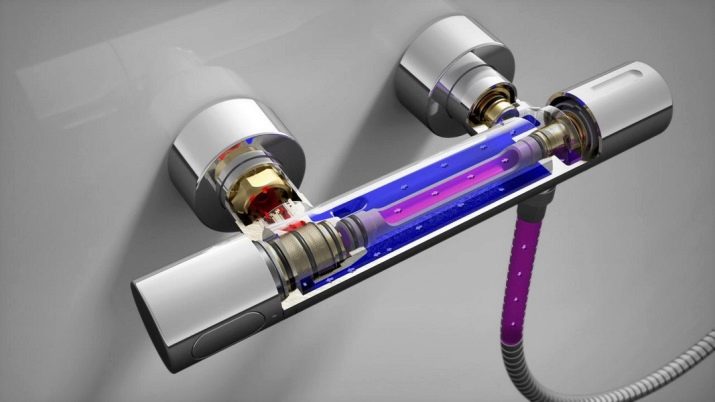
Materials (edit)
The inner block of the mixer is made of silicone, rubber, plastic or special ceramics. The choice of a specific option is the prerogative of the engineers. But consumers can choose the material of the case themselves. Stainless steel is the worst option. After scratches appear, the corrosion protection will automatically disappear, and destruction of the material will begin on the scratched places.
Therefore, stainless steel taps serve a maximum of 5 years, even under ideal operating conditions. Brass is not capable of rusting in principle. It perfectly withstands hydraulic stress and is resistant to mechanical stress. Spraying makes the surface of brass products more beautiful. In addition, the service life of the brass mixer will be at least 8 years, and it will be inexpensive.
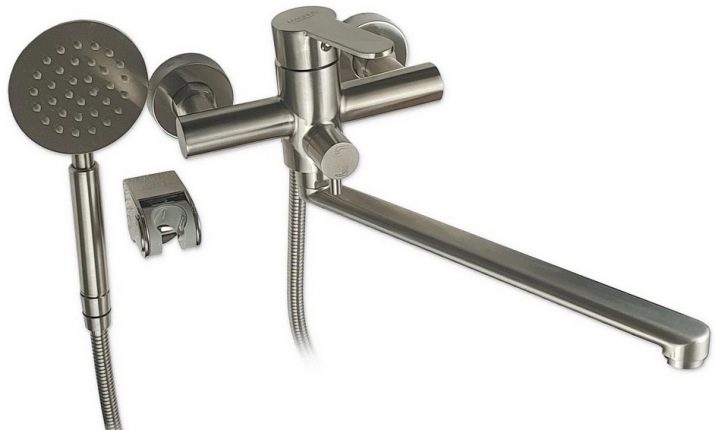
Bronze is heavier and stronger than brass. In terms of chemical and physical properties, these alloys are close. However, bronze items are darker, which makes them acceptable only in certain interior styles. You will have to pay more for bronze than for brass. In terms of wear resistance, there is no particular difference between them.
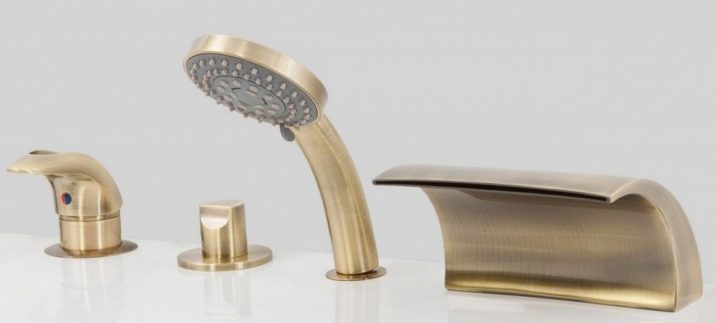
Silumin mixers are very cheap. They are produced in Asian countries and are used as a temporary solution or where water is rarely used. Aluminum-silicon alloy is not durable enough. By the end of the first year of operation, leaks will begin. No care of the owners will help here, repairs are fundamentally impossible.
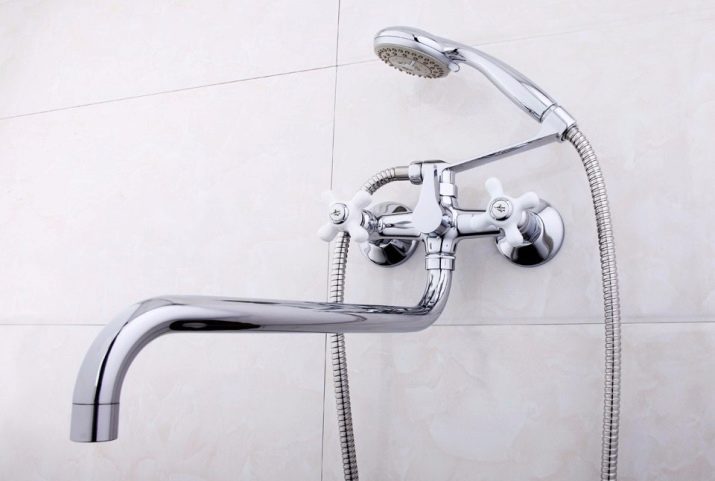
Functional
The main functional feature of any mixer is the spout height. With a low (up to 0.15 m) and medium (up to 0.25 m) spout, you can only wash your face and brush your teeth.But it will be possible to wash your hair, get water or bathe your pet only with the use of high faucets. As for the shower head, the models of traditional simple execution are steadily pushed aside by more modern ones that have additional functionality. Basic versions are able to provide aeration and the so-called hard massage shower. In any case, it is advisable to choose watering cans from metal. Plastic varieties are not strong enough.
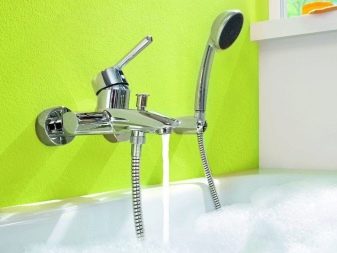
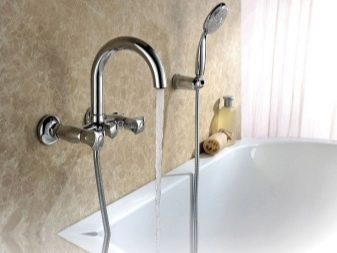
If the device is equipped with a check valve, then a sharp rise in pressure in the pipe will not lead to a return flow of water. This property is very valuable where interruptions in water supply have become commonplace.
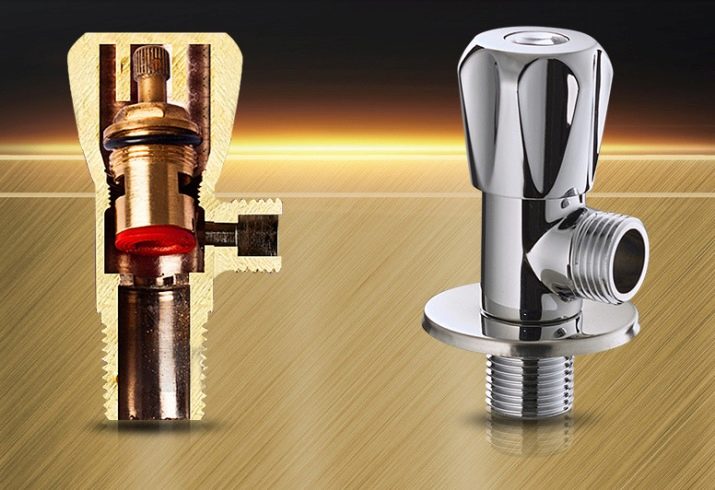
Important: it is not allowed to install water meters without a check valve, because otherwise it will be easy to unscrew the counting disc back.
Bottom valves are a good substitute for sinks or bidets. A button on the body helps to control them.
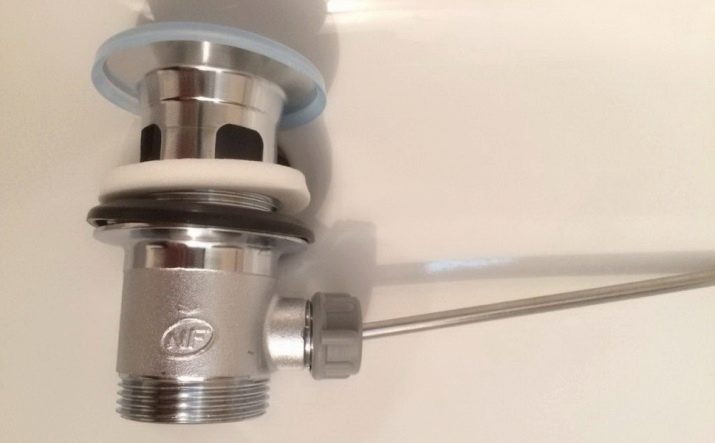
Selection Tips
When choosing a mixer for both corner and direct baths, you should definitely not be guided by the price. In some cases, manufacturers and wholesalers inflate the price of low-quality goods without any reason. In others, they sell relatively cheap good-quality items. It is completely impossible to predict this. To understand which product is better, to some extent, only reviews and ratings help.
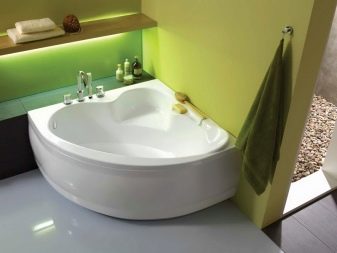
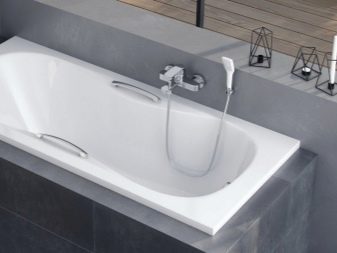
Important: in Russia and even in Asian countries, they can make good-quality plumbing, but its price is not too inferior to the prices of good European samples.
With single-lever mixers, the cartridge is critical. It is because of failures with this element that many problems with the shower occur. As for the rubber-sealed two-valve taps, they are useful for water of any quality, even with small contaminants. Neither hard water nor rust is harmful to them.

A long nose is needed:
- to reduce costs;
- for bathing children;
- to combine washing with household use of the bath;
- if it is impossible to supply pipes to the sink.


It is advised to attach wall mixers to a steel bathtub. Mounting on a side is long, and without special skills and tools, it is impossible. There is a great risk of damaging the enamel and provoking severe corrosion. Anything can be mounted on a cast-iron bath, except for an on-board crane. Any mixer can be placed on an acrylic bath, but one must remember about the fragility of acrylic.
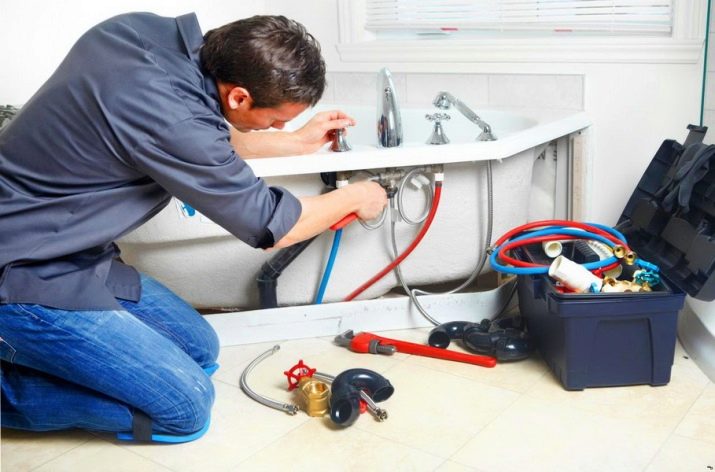
For information on how to install and connect the mixer to the side of the bath, see the next video.








